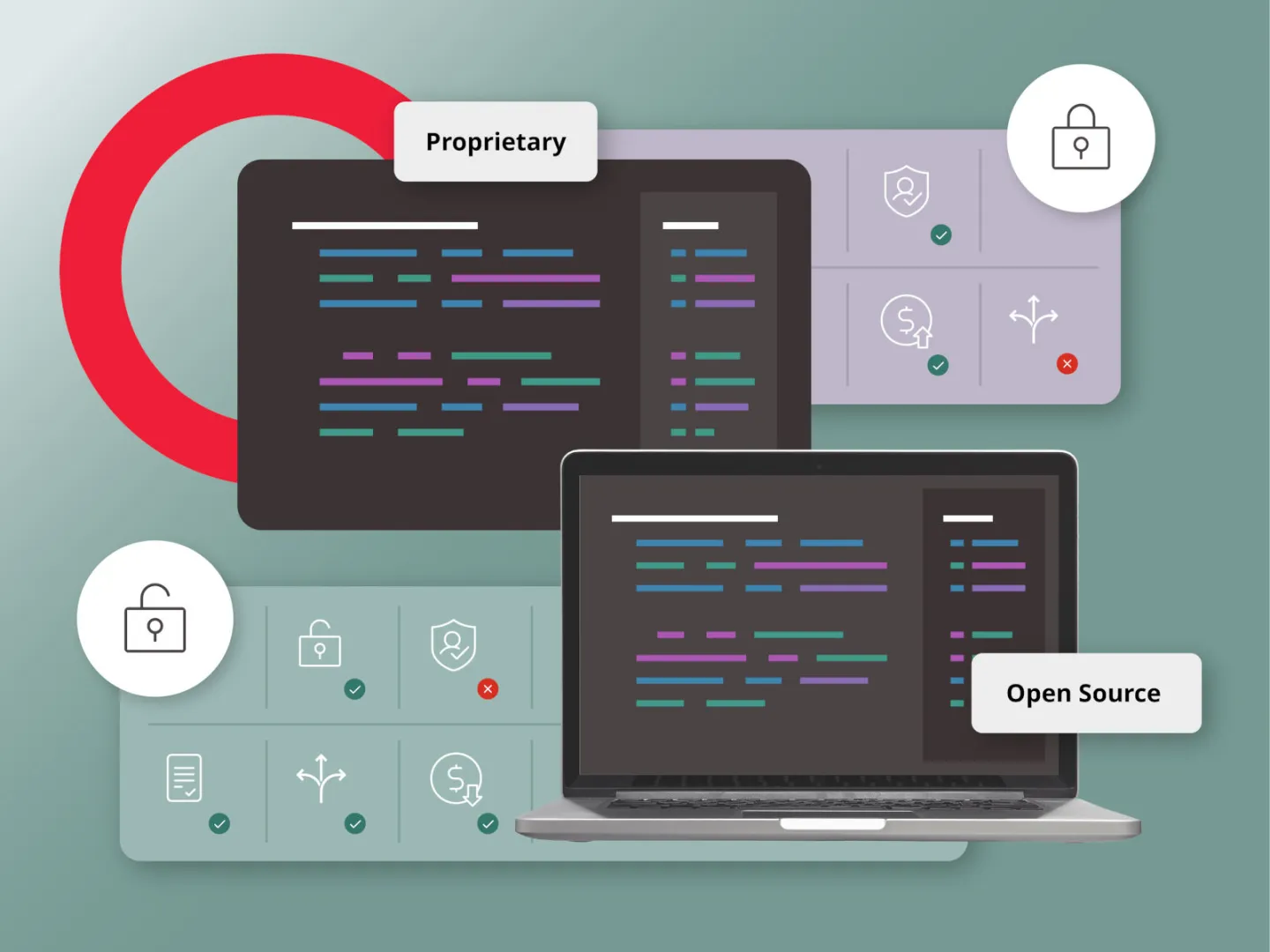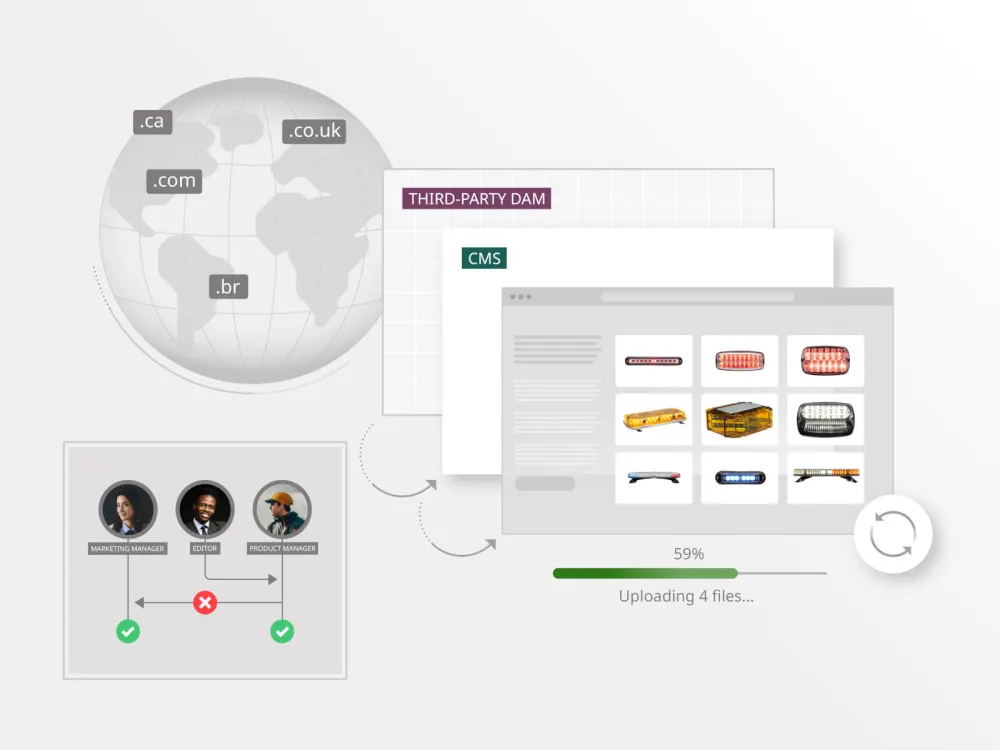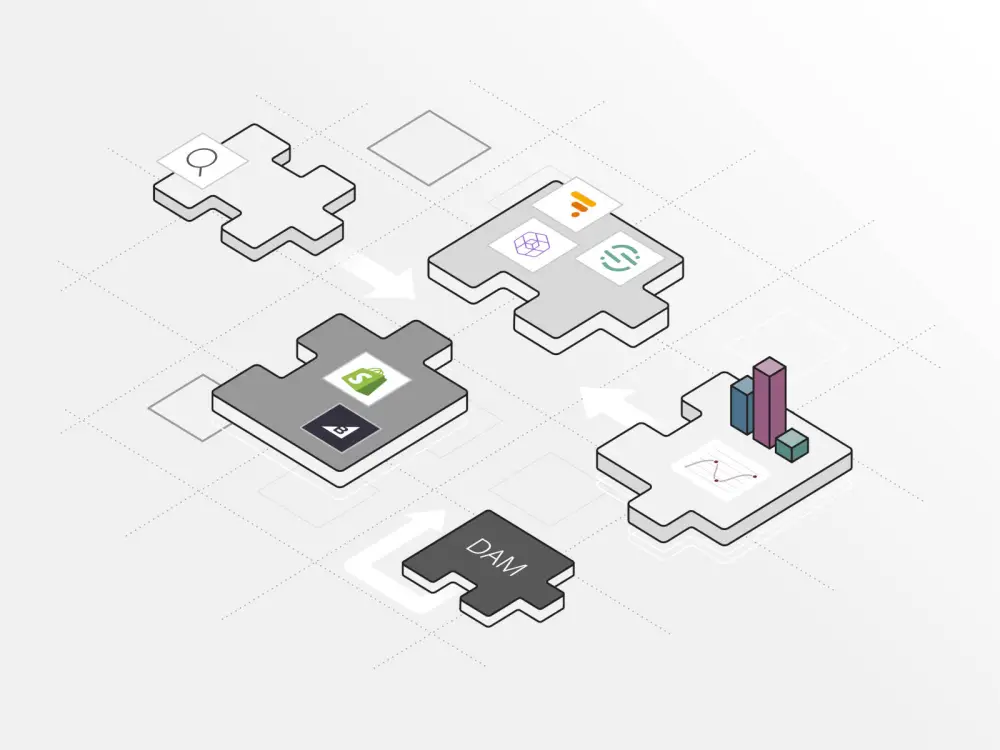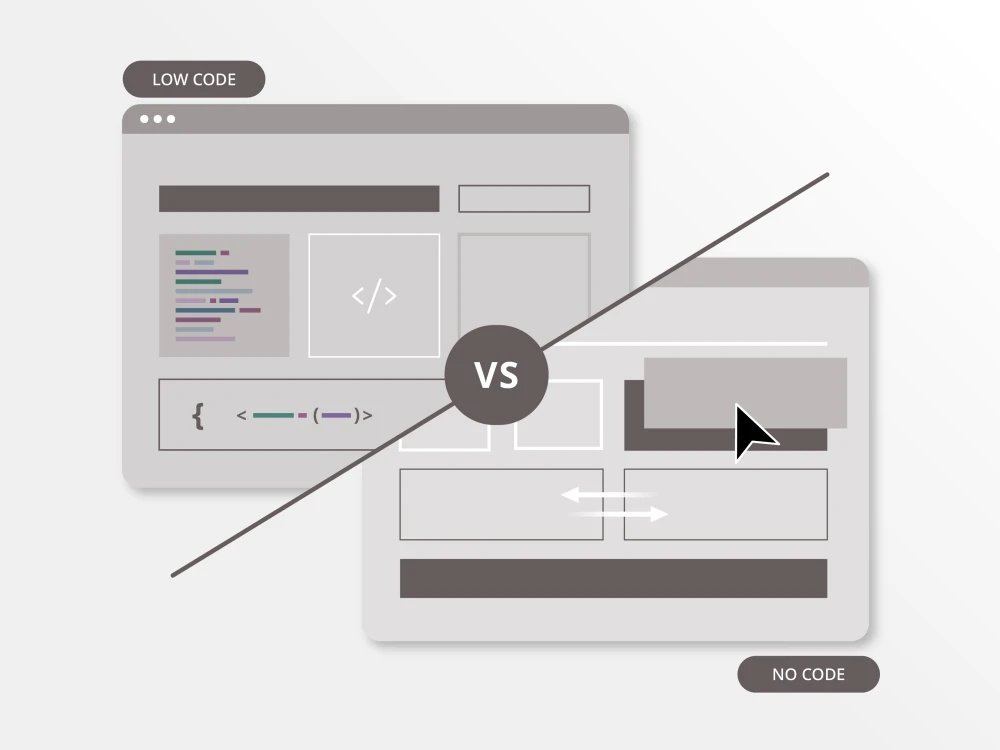Introduction: Understanding different types of CMS
First, let’s review the different types of CMS, and a few of the major players in each category. You’ll certainly recognize names on both lists. When it comes to open-source CMS, the major players include:
- Wordpress: The most popular CMS in the world is also open source. It boasts a user-friendly interface and a large community of engineers creating plugins (think of these as feature “add ons”) and themes.
- Drupal: Another open-source CMS (particularly Drupal 8) that’s popular for building websites and applications. Drupal is known for being flexible, secure and scalable. Drupal also offers RESTful APIs as part of its core offering.
- Joomla: Another popular open-source CMS, Joomla is user-friendly, with a built-in editor tool and SEO toolkits. It’s also suitable for running an online store, with merchandise and shopping cart extensions.
On the proprietary end of the spectrum, commonly licensed content management systems are:
- Adobe Experience Manager: Also known as AEM, this is the 800-pound gorilla in the CMS space. It’s popular with enterprise businesses, and marketing teams in particular, thanks to its comprehensive solution for building websites and mobile apps, as well as its suite of personalization tools.
- Sitecore: Another powerful CMS that offers built-in tools like a CDP and personalization, and integrates easily with other marketing automation tools.
- Expressions Engine: A PHP-based platform, this CMS is highly flexible in its support for structured content. It also supports plugin-like add ons, like SEO features and photo galleries, as well as an e-commerce system.
Open-source CMS: A closer look at the cons
Open-source software is best understood as being openly available on the Internet at large. This means any engineer can download the source code, and subsequently modify, adapt or customize the software. There is no licensing fee or authentication method.
Open-source software is usually managed and tested through a community of some sort, where defects can be centrally reported and monitored. Often there is community support, as well as citizen developers who contribute fixes and improvements.
When using open-source software, your engineering team can develop a brand new feature — giving you ultimate flexibility in designing the perfect CMS for your business needs. The only cost to your business in this scenario is the cost of paying your engineer to build and maintain the feature, as well as the rest of the CMS. Of course, those costs can add up.
The potential cons of using an open source CMS include:
- Plugin proliferation: With many open-source CMSs, the solution to every new feature request is yet another plugin. This can feel like a miracle pill at first — but the more plugins you add, the more plugins you’ll have to maintain. Plus, the plugins are often open-source themselves, created by engineers who may have lost interest in maintaining them... making it difficult to near-impossible to find adequate support.
- Maintenance and updates: In order to keep the CMS secure, it will require regular updates. This responsibility falls to users — so you’ll need engineers who are comfortable making these security updates, or you’ll need to hire an agency. Regardless of which choice you make, the costs are ongoing.
- No centralized support: Open-source CMS customers must largely fend for themselves on the open web when experiencing problems with a website, or a plugin. With no centralized or “expert” help to turn to, both simple and complex issues can derail a web project.
Proprietary CMS: A closer look at the cons
On the opposite end of the spectrum is proprietary software. Source code for proprietary software is not publicly available, and can usually be acquired only via a valid license or authentication method. In this scenario, only the organization or individual responsible for the software can make modifications to it.
In addition, the license to use the software will generally apply further restrictions, such as how many users can access the software and for how long. The owning entity of the software manages the development, testing and deployment of any new feature. In this scenario, your engineering team would not be able to make modifications to the CMS to support your business — you’d need to work directly with the organization responsible for the CMS to do so. Some other disadvantages of a proprietary CMS you should consider are:
- Licensing costs: You can think of a proprietary CMS as a lease — you aren’t buying the source code and you won’t own the CMS at the end of your license. Additionally, be sure to run a careful evaluation of your needs and the CMS’s feature set — the CMS market is crowded, and not all competitors have the same robust feature sets.
- Vendor trust / lock in: With a proprietary CMS, you’re hitching your fates to that of the organization behind it. You’ll be dependent on them to introduce new features and functionality — as well as to perform regular maintenance and upgrades.
- Content portability: Switching from one proprietary CMS to another can be difficult due to complexity in exporting data. Be sure to understand how your data will be “ported” at the end of your license, otherwise you could end up with a migration nightmare on your hands in the future.
Open-source vs. proprietary CMS: How to choose
Now that we have established the major differences — and downsides — between open-source CMS and a proprietary CMS, how will you decide which is the right choice for your business?
Ultimately, the major differences between open-source and proprietary software can be boiled down to flexibility and cost. Your businesses’ appetite for those two factors should drive your decision when it comes to picking a CMS. Here are a few things to keep in mind to help you navigate the choice.
Flexibility: Think about your business needs as it pertains to a CMS. How often will your team be creating and changing content? How truly unique are your CMS customization requirements? Your answers to these questions will be telling — if your requirements are complex, and content is singularly important to your business, then a proprietary system may be the safer choice here.
Cost: When evaluating costs, the important figure to focus on is the Total Cost of Ownership — not the initial start-up costs (which can be deceptively low, by design!). Be sure to factor in maintenance costs, the cost of support (again, either via an agency or dedicated engineer), and potential issues with plugins.
Still stuck? It’s a complex decision — and the right answer will vary greatly for different kinds of businesses. Here’s a set of questions to ask yourself as you weigh the decision.
- How complex is your website? Are there many custom features? A lot of custom integrations? A large amount of content?
- What are the technical skills of your organization right now? Is your team highly skilled, or do you have plans to hire skilled employees in the near future? Who is equipped to handle hosting?
- How much traffic do your websites receive daily?
- What are your business’ security needs?
- Is uptime critical for your business?
Armed with these answers — and your newfound knowledge about open source and proprietary CMSs — you’ll be well on your way to making the best decision for your business.
One significant advantage of proprietary CMS is the comprehensive support and services provided by the vendor. Unlike open-source alternatives, proprietary CMS solutions typically come with dedicated customer support, including assistance with implementation, maintenance and troubleshooting. This level of support can be invaluable for organizations lacking extensive technical expertise or resources. Additionally, proprietary CMS often boasts advanced features and functionalities tailored to specific industries or use cases. These proprietary features may include built-in personalization tools, advanced analytics capabilities and seamless integration with other proprietary software solutions, providing organizations with a cohesive and streamlined digital experience. Furthermore, proprietary CMS solutions often prioritize security and compliance, with regular updates and patches to address vulnerabilities and ensure data protection. By investing in a proprietary CMS, organizations can benefit from a reliable and secure platform backed by professional expertise and ongoing innovation.
One notable disadvantage of proprietary CMS can be the associated licensing costs. Unlike open-source alternatives, proprietary CMS typically require purchasing a license, which can incur significant upfront expenses and ongoing fees. Additionally, these licenses often come with limitations on usage, such as restrictions on the number of users or the duration of access. Another drawback is vendor trust and lock-in. By choosing a proprietary CMS, organizations become reliant on the vendor for ongoing support, updates and feature enhancements. This dependency can lead to concerns about vendor stability, future development direction and potential difficulties in transitioning to alternative solutions. Furthermore, content portability can be a challenge with proprietary CMS. Transferring data from one proprietary platform to another can be complex and time-consuming, potentially resulting in data loss or format compatibility issues. These factors underscore the importance of careful consideration and thorough evaluation when selecting a proprietary CMS for your business needs.
When considering open-source CMS software, it’s important to acknowledge the numerous advantages it offers. One significant benefit of open-source CMS is its flexibility and customization options. Because the source code is openly available, users have the freedom to modify and tailor the software to meet their specific needs and preferences. This flexibility allows organizations to create unique and highly customized digital experiences without being constrained by proprietary limitations. Additionally, open-source CMS solutions benefit from a large and active community of developers and contributors. This vibrant community fosters innovation and collaboration, resulting in a wide range of plugins, extensions and integrations that enhance the functionality and versatility of the CMS. Furthermore, open-source CMS software typically comes with lower upfront costs compared to proprietary alternatives. Since there are no licensing fees, organizations can significantly reduce their initial investment and allocate resources to other areas of their business. Moreover, open-source CMS solutions offer transparency and accountability. With access to the source code and a community-driven development model, users can independently verify the security and quality of the software, reducing the risk of vendor lock-in and ensuring long-term sustainability.
When considering open-source software for your content management system (CMS), it’s important to weigh the potential drawbacks alongside its benefits. One significant disadvantage of open-source CMS is the risk of plugin proliferation. While plugins offer flexibility and added functionality, relying heavily on them can lead to maintenance challenges. Each new plugin adds complexity and potential vulnerabilities to your system, and since many plugins are open-source themselves, finding adequate support can become challenging. Additionally, maintenance and updates are the responsibility of the users in open-source CMS, requiring ongoing attention to keep the system secure. Unlike proprietary CMS, there’s no centralized support to turn to when issues arise, leaving users to navigate problems independently.











